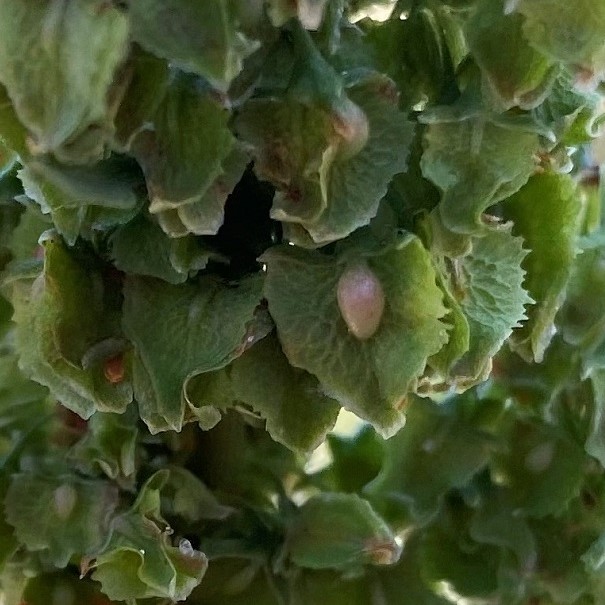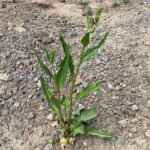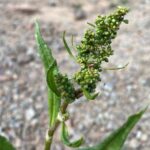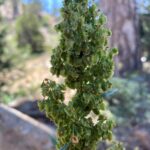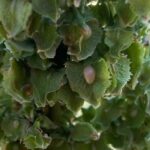Αλαπαθκιά, Λάπαθο το κορωνιδοφόρο
Etymology of Rumex cristatus
"Rumex" was named after Pliny; Rumex means "javelin or spear", due to the pointed shape of the leaves of many species of this genus. The name "cristatus" is Latin meaning ''tufted, crested'' and alludes to the distinctive crests in this species.
Rumex cristatus in Cyprus
Rumex cristatus despite being a common plant in Cyprus grows only on the Troodos mountain range and the surrounding high mountains, as it appears at an altitude of 700–1950 (the peak of Olympus mountain). It primarily grows on non-rough cultivated or uncultivated ground in open areas. The plants in the pictures were photographed in Kato Platres, Lemesos. Rumex cristatus's flowering period is between May and July.
How to identify Rumex cristatus
Rumex cristatus, commonly known as crested dock or Greek dock, possesses several unique features that help distinguish it from other Rumex species and subspecies:
- Fruiting Valves (Inner Tepals): The most distinctive characteristic is the margins of the fruiting valves, which are irregularly erose-denticulate, meaning they have an uneven, toothed or jagged edge. This contrasts with many other Rumex species that have entire (smooth), wavy (undulate), or more regularly toothed margins. The teeth on Rumex cristatus are typically short but distinct, up to 1 mm long, and are particularly noticeable in the basal half of the valve.
- Tubercles: Rumex cristatus usually has three tubercles (wart-like swellings) on the inner tepals in the fruit, and these are typically unequal in size. While some other Rumex species also have tubercles, the consistent presence of three unequal tubercles and the overall shape and size of the valves help in identification.
- Pedicels: The pedicels (stalks of the individual flowers/fruits) of Rumex cristatus are characteristically thin (filiform) and long, significantly longer than the perianth segments (tepals). The articulation (joint) on the pedicel is distinctly swollen. This combination of long, thin pedicels with a swollen articulation is a key distinguishing feature. In contrast, some other species have shorter pedicels or pedicels with less pronounced or absent swelling at the articulation.
- Inflorescence Density: The fruits on the flowering branches appear very crowded and compact, with the individual fruits situated close together. The branching of the inflorescence is not strongly divaricated (widely spreading), contributing to this dense appearance.
- Leaves: The basal leaves are typically broadly lanceolate to oblong-lanceolate and can reach a significant size (15-25 cm long by 5-7 cm wide). The base is truncate, rounded, or slightly cordate, and the margins can be entire, undulate, or weakly crisped. The lateral veins join the midrib at a relatively wide angle (60-80°).
- Overall Size: Rumex cristatus is a tall plant, often reaching 70-150 cm (or even up to 200 cm) in height, which can help differentiate it from smaller Rumex species.
While individual characteristics might overlap with some other Rumex species, the combination of these features, particularly the distinctly toothed fruiting valve margins, the long, thin pedicels with a swollen articulation, and the dense inflorescence, provides reliable means for identification.
